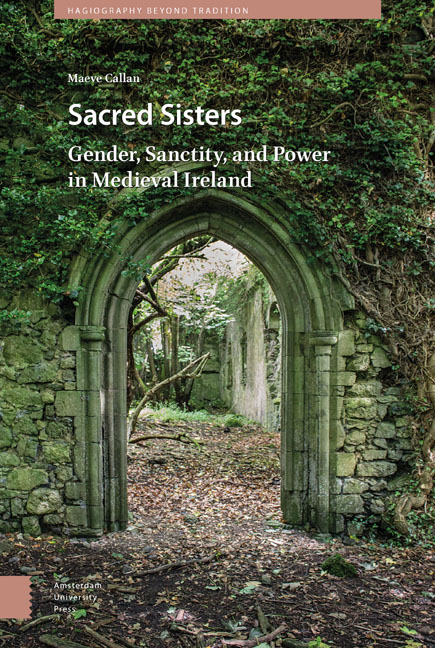Book contents
- Frontmatter
- Dedication
- Contents
- List of Figures
- Preface
- Introduction
- 1 “Founded upon the Rock Which is Christ”: What Patrick and His Promoters Reveal about Women in the Early Irish Church
- 2 “A New and Apostolic Band of Virgins Arose”: Darerca, an Exceptionally Learned Abbess
- 3 “The Safest City of Refuge”: Brigid the Bishop
- 4 “God is Always Present with Those who Exemplify Such Devotion”: Íte, Foster-Mother of the Saints of Ireland
- 5 “Do not Harass my Sisters”: Samthann, an Abbess not to be Crossed
- 6 “I Place Myself under the Protection of the Virgins all Together”: Sister Saints with Something Like a Life
- Conclusion
- Appendices
- Appendix A The Sites
- Appendix B The Sources
- Appendix C Feast Days of Early Medieval Irish Female Saints
- Appendix D Glossary
- Appendix E Pronunciation of Personal Names
- Bibliography
- Index
Appendix B - The Sources
- Frontmatter
- Dedication
- Contents
- List of Figures
- Preface
- Introduction
- 1 “Founded upon the Rock Which is Christ”: What Patrick and His Promoters Reveal about Women in the Early Irish Church
- 2 “A New and Apostolic Band of Virgins Arose”: Darerca, an Exceptionally Learned Abbess
- 3 “The Safest City of Refuge”: Brigid the Bishop
- 4 “God is Always Present with Those who Exemplify Such Devotion”: Íte, Foster-Mother of the Saints of Ireland
- 5 “Do not Harass my Sisters”: Samthann, an Abbess not to be Crossed
- 6 “I Place Myself under the Protection of the Virgins all Together”: Sister Saints with Something Like a Life
- Conclusion
- Appendices
- Appendix A The Sites
- Appendix B The Sources
- Appendix C Feast Days of Early Medieval Irish Female Saints
- Appendix D Glossary
- Appendix E Pronunciation of Personal Names
- Bibliography
- Index
Summary
Three great collections of Latin Lives of Irish saints exist, called the vitae sanctorum Hiberniae, the Lives of the saints of Ireland. All date from after Ireland's invasion by Anglo-Normans in the late twefth-century and indicate a degree of co-operation between the native Irish and Anglo-Norman colonists who settled there, who eventually became known as the Anglo-Irish. Each collection contains one of the Lives translated below. The late thirteenth- or early fourteenth-century Codex Salmanticensis, now held in the Royal Library of Brussels, includes both Darerca's Life and the Catalogus Sanctorum Hiberniae. Some regard it as the latest of the three collections, but its compiler is thought to have made the least changes to the Lives, so it could preserve much older versions, and its patron may have been a woman. The main source for Íte's Life is commonly called the Codex Kilkenniensis (from Kilkenny), now held in Archbishop Marsh's library in Dublin. For Samthann, it's the Codex Insulensis (from island), with two surviving copies in Oxford. Brigid's Lives are or were included in all three collections, but here I offer a Life from outside these collections—her earliest, by Cogitosus, which is generally accepted as the first Life of an Irish saint by an Irish author—an honor that might more accurately belong to Darerca's original but now lost Life. Richard Sharpe's Medieval Irish Saints’ Lives provides the most thorough historical analysis of the collections as a whole, but the female saints’ Lives are fairly marginal to his argument, with the usual exception of Brigid.
Sharpe calls the Codex Kilkenniensis the Dublin Collection, as its two fifteenth-century copies currently reside in Dublin, one in Archbishop Marsh's Library that can be viewed online thanks to the Dublin Institute for Advanced Studies’ Irish Script on Screens project,2 and a second, less complete and more abused copy that lacks Íte's Life at Trinity College (MS 175). Sharpe regards the Codex Kilkenniensis as the earliest of the three collections, compiled in the third decade of the thirteenth century: “Almost every Life in the collection betrays the interests, the idiosyncracies, and the linguistic stamp of one redactor.
Information
- Type
- Chapter
- Information
- Sacred SistersGender, Sanctity, and Power in Medieval Ireland, pp. 212 - 275Publisher: Amsterdam University PressPrint publication year: 2019
